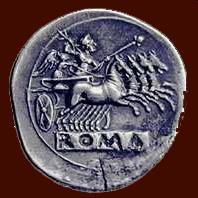







Looking After Your Finds - Identification - Finds




Weapons - Roman (examples) Shields


Powered By Sispro1

Roman Shields
Copyright All Rights Reserved by Nigel G Wilcox E-Mail: ngwilcox100@gmail.com
Designed by Nigel G Wilcox
Complimentary Topics
The Paragon Of Metal Detecting
& Archaeology
& Archaeology
Shields of Ancient Rome
Roman soldiers or legionaires were well protected by leather and iron armour, helmets and shields, called scuta. The shapes and styles of Roman shields differed according to use and timeframe. Many shields were based on Greek aspis or hoplon, which were round and deeply concave like a dish.
Aspides were wooden and sometimes plated with bronze. Some Roman shields were strengthened by plating their edges with a copper alloy, though this was eventually abandoned in favour of using stitched rawhide, which bound the shields more effectively.
Roman soldiers or legionaires were well protected by leather and iron armour, helmets and shields, called scuta. The shapes and styles of Roman shields differed according to use and timeframe. Many shields were based on Greek aspis or hoplon, which were round and deeply concave like a dish.
Aspides were wooden and sometimes plated with bronze. Some Roman shields were strengthened by plating their edges with a copper alloy, though this was eventually abandoned in favour of using stitched rawhide, which bound the shields more effectively.

Umbo from Roman shield. Credit: MatthiasKabel (Wikimedia Commons)
Roman shields also featured a boss or umbo, a thick, round, wooden or metal protrusion that deflected blows and served as a place to mount the grip.
Parma
For reasons of movement and balance, soldiers on horseback used smaller round shields, called parma. A typical Parma measured a maximum of 36” across and had a strong iron frame, though these were eventually abandoned for lighter oval shields of wood and leather.
During the early Republican period, foot soldiers also used a kind of parma, but this was replaced by the longer scuta, which offered more protection.
Clipeus
The clipeus was the Roman version of the Greek aspis. Although the clipeus was used alongside the rectangular legionaire or great scutum, after the 3rd century the oval or round clipeus became the standard shield of the Roman soldier.
Based on examples discovered at archaeological sites, the clipeus was constructed of vertical glued planks, covered with painted leather and bound on the edges with stitched rawhide.
For reasons of movement and balance, soldiers on horseback used smaller round shields, called parma. A typical Parma measured a maximum of 36” across and had a strong iron frame, though these were eventually abandoned for lighter oval shields of wood and leather.
During the early Republican period, foot soldiers also used a kind of parma, but this was replaced by the longer scuta, which offered more protection.
Clipeus
The clipeus was the Roman version of the Greek aspis. Although the clipeus was used alongside the rectangular legionaire or great scutum, after the 3rd century the oval or round clipeus became the standard shield of the Roman soldier.
Based on examples discovered at archaeological sites, the clipeus was constructed of vertical glued planks, covered with painted leather and bound on the edges with stitched rawhide.

A sculpture of a clipeus from the 1st century AD, featuring Jupiter-Amon, an amalgamation of Roman and Egyptian gods. Credit: National Archeological Museum of Tarragona.
Gladiator Shields
The entertainment aspect of gladiatorial fighting leant itself to variety. Contestants were therefore outfitted with different types of shields, whether of Greek or Roman origin or from a foreign, conquered land. It wasn’t unusual to see a hexagonal Germanic shield in the gladiators’ ring, while an elaborately decorated scutum, parma or clipeus served to heighten the spectacle.
Gladiator Shields
The entertainment aspect of gladiatorial fighting leant itself to variety. Contestants were therefore outfitted with different types of shields, whether of Greek or Roman origin or from a foreign, conquered land. It wasn’t unusual to see a hexagonal Germanic shield in the gladiators’ ring, while an elaborately decorated scutum, parma or clipeus served to heighten the spectacle.
Courtesy: Extracts from Made from History - Graham Land 2015 added 15.02.18
[1]
[2]
Pages
Main Coin Menu
Roman Coins
Menu
Menu
Member NCMD
Roman Menu























